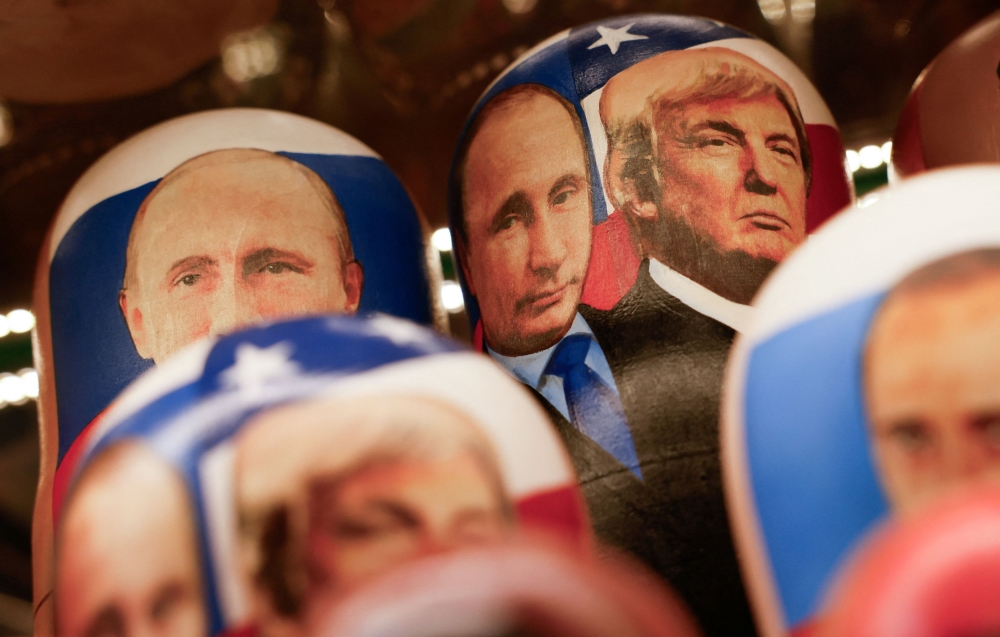AUGUST 13 — On August 15, US President Donald Trump and Russian President Vladimir Putin will meet in Alaska to discuss ending the war in Ukraine.
The announcement alone has injected new urgency — and uncertainty — into a conflict that has not only ravaged Ukraine but also strained the very principles of the international order.
What makes this meeting “make or break” is not just the prospect of peace but the terms under which it might be achieved.
According to credible reports, Russia’s conditions would “lock in” its occupation of territories seized since the February 2022 invasion.
The Kremlin’s proposal reportedly demands Ukraine’s withdrawal from areas in Luhansk and Donetsk that Kyiv still controls.
In other words, Russia is seeking a settlement that formalises its control over large swathes of the Donbas in exchange for a cessation of hostilities.
For Ukraine, this is a diplomatic nightmare. Not only would it mean ceding sovereign territory, but it would also set a precedent for rewarding military aggression.
President Volodymyr Zelenskyy has made it clear that no Ukrainian leader can legally or morally sign away territory.
He has warned that surrendering these areas would hand Moscow a ready-made springboard for future offensives, rather than guaranteeing lasting peace.
What is particularly alarming is Ukraine’s exclusion from the Alaska meeting.
This is no trivial oversight.
It signals the possibility of deals being cut over Ukraine’s fate without Ukrainian participation — violating the basic principle of “no peace about Ukraine without Ukraine.”
If this summit produces an agreement in which Kyiv is not a party, the legitimacy of the outcome will be fatally compromised.
The risks extend far beyond Ukraine. The international system, particularly since the end of the Second World War, has been anchored in the principle that borders cannot be altered by force.
This norm is not merely an idealistic slogan; it has been a practical bulwark against the chaos of unrestrained territorial conquest.
Should the Alaska summit produce an agreement that legitimises Russia’s occupation, it will send a dangerous message to other revisionist powers: force works, and obdurate patience pays. Exactly the values that go against the principle of non-aggression espoused by Asean.
Putin’s strategy is transparent. By continuing to consolidate his territorial gains while dangling the prospect of peace, he maximises Russia’s leverage.
The Kremlin’s other reported demands — such as a pledge to halt Nato’s eastward expansion — are designed to lock Ukraine into a security grey zone, too weak to defend itself and too isolated to deter future aggression.
For Trump, the optics of brokering peace with Putin could be politically advantageous.
He has hinted at “land swaps” that, in his words, could benefit both sides.
Yet, history warns us that peace purchased at the expense of sovereignty rarely holds.
The Munich Agreement of 1938 is the most infamous example of a settlement that emboldened, rather than restrained, an aggressor.
Then, as now, the desire to halt war in the short term risked planting the seeds for greater conflict later.
The Alaska summit could also have far-reaching implications for Europe’s security architecture.
Nato, already tested by the war in Ukraine, will have to contend with the prospect of a member state — the United States — participating in an agreement that might weaken the alliance’s deterrence posture.

Russian traditional nesting dolls, known as Matryoshkas, with images of Russian President Vladimir Putin and US President Donald Trump are placed on a shelf during a demonstration at a gift shop in central Moscow, Russia August 12, 2025. — Reuters pic
For any genuine peace framework to emerge from Alaska, several non-negotiable elements must be present.
First, Ukraine must be at the table. Peace cannot be imposed on a sovereign state by external powers, however influential.
Second, any deal must come with robust, enforceable security guarantees, ideally backed by a coalition of states, to prevent a repeat of Russia’s February 2022 invasion.
Third, humanitarian issues — such as the return of abducted Ukrainian children — must be prioritised and resolved immediately.
Fourth, an international monitoring mechanism must be established to oversee the implementation of any ceasefire and ensure compliance by both sides.
Without these elements, any agreement will be little more than a temporary truce dressed up as a settlement.
The stakes are not just territorial; they are about whether the post-Cold War security order can survive intact. Since 1945, the prohibition on territorial conquest has been one of the few near-universal norms in international relations.
Breaking it in Ukraine will not just embolden Russia — it will encourage similar tactics in other regions where borders are contested, from the East to the South China Sea to the Caucasus.
At the same time, dismissing the summit outright would be a mistake.
The alternative — continued bloodshed, displacement, and economic destruction — remains intolerable.
The Alaska summit is a rare opportunity. Used wisely, it could open a path to genuine reconciliation.
Mishandled, it could mark the moment the rules-based order began to unravel in earnest, with which East Asia cannot but feel the future impacts too, including Asean.
The world will be watching, not just for the handshake but for what it truly represents: peace at the expense of principle — or peace forged through principle.
* Phar Kim Beng is a professor of Asean Studies and Director of the Institute of Internationalization and Asean Studies at the International Islamic University of Malaysia.
** This is the personal opinion of the writer or publication and does not necessarily represent the views of Malay Mail.






